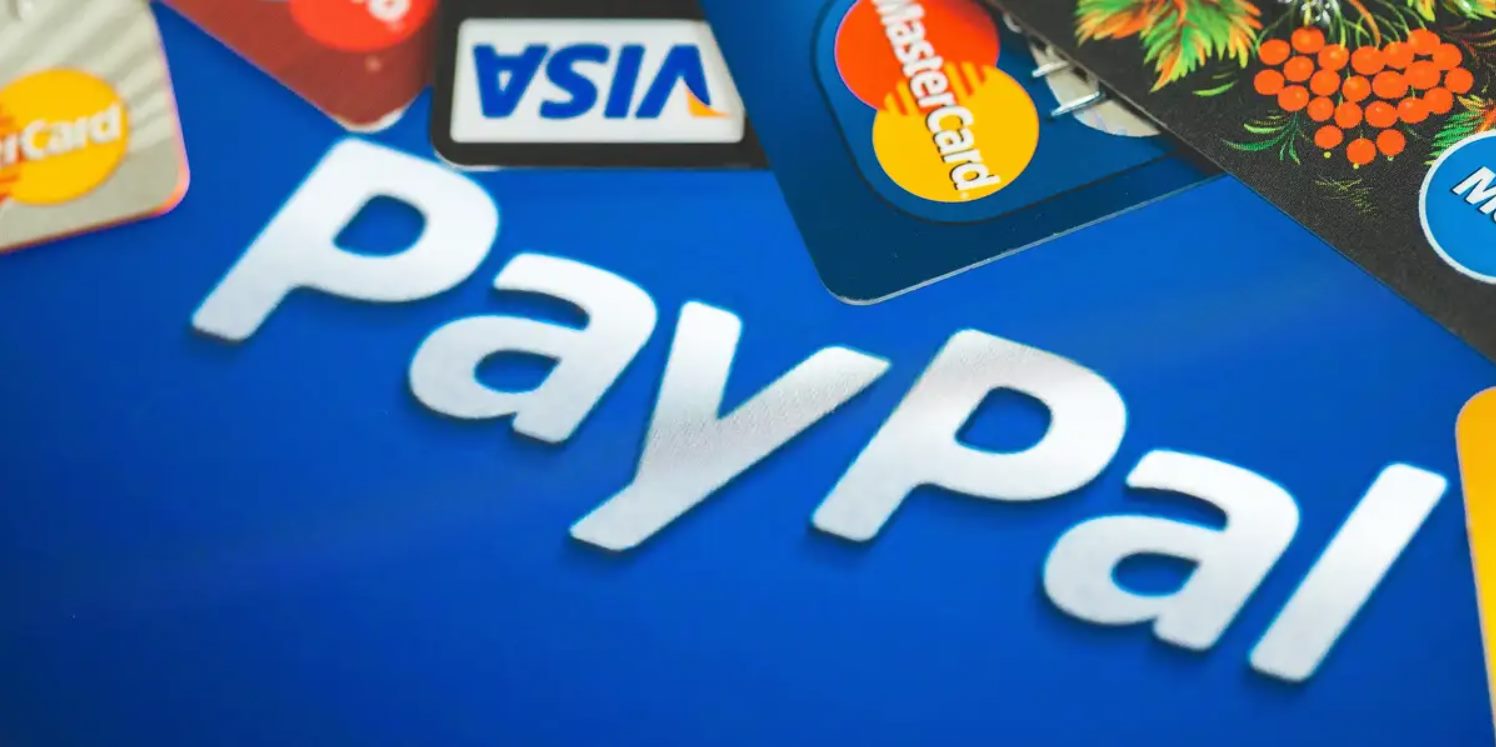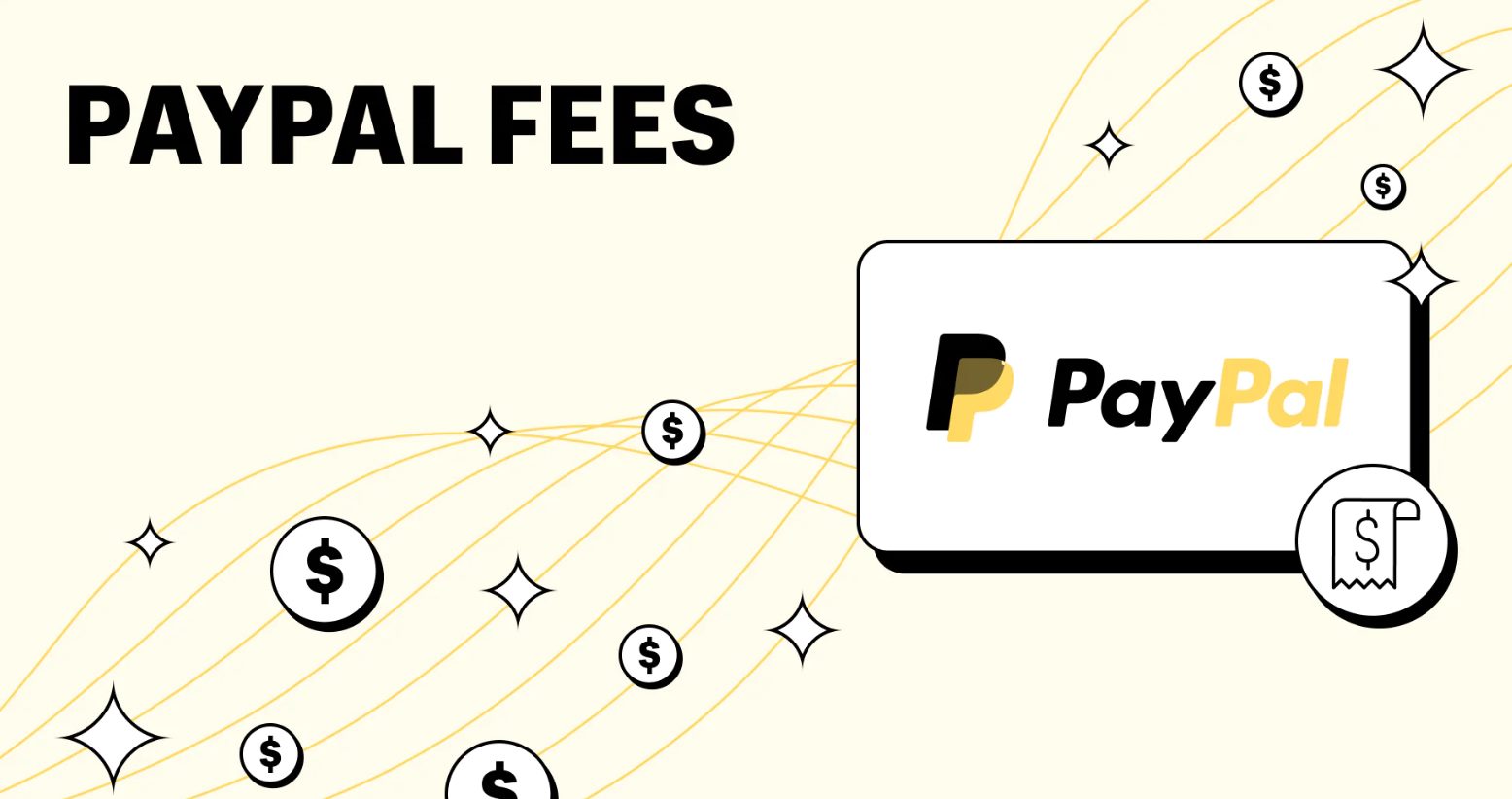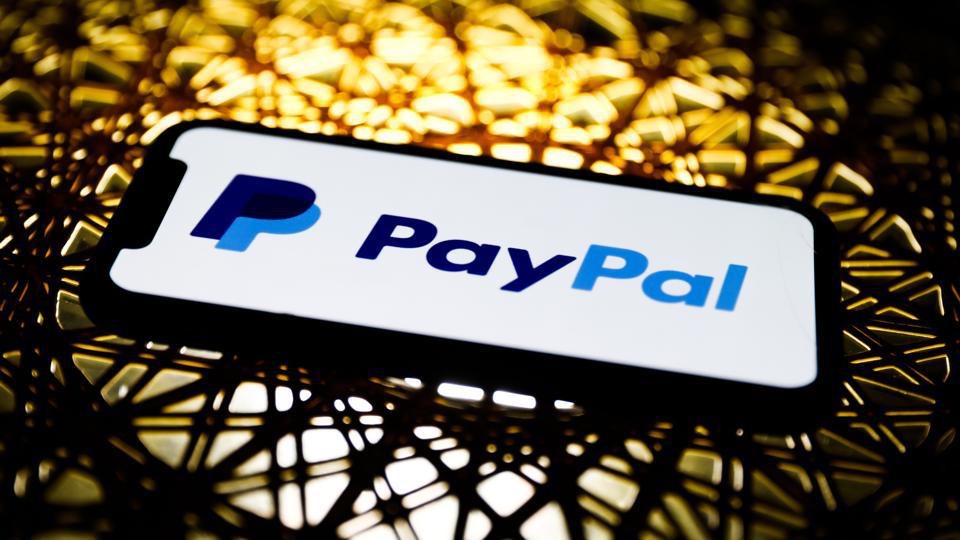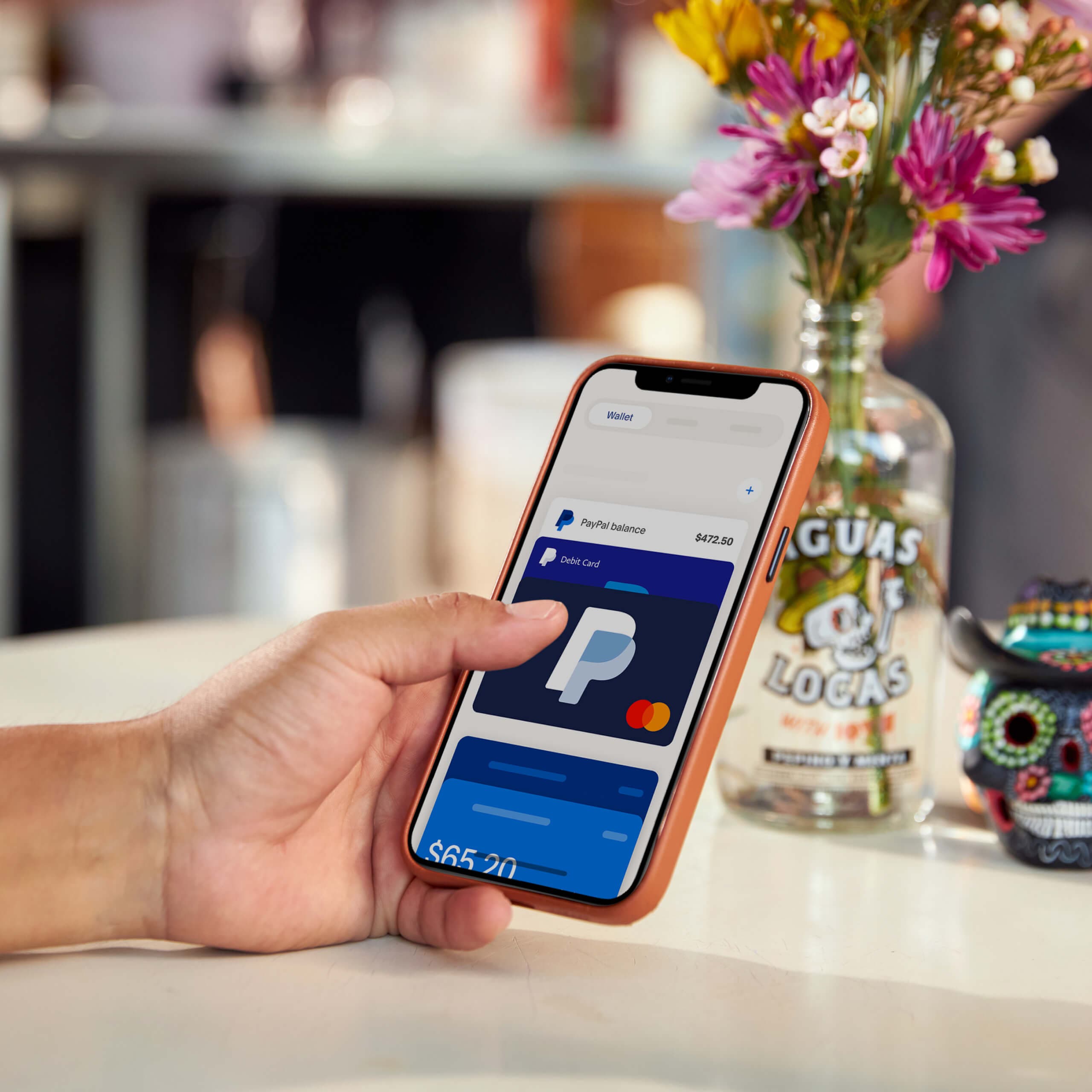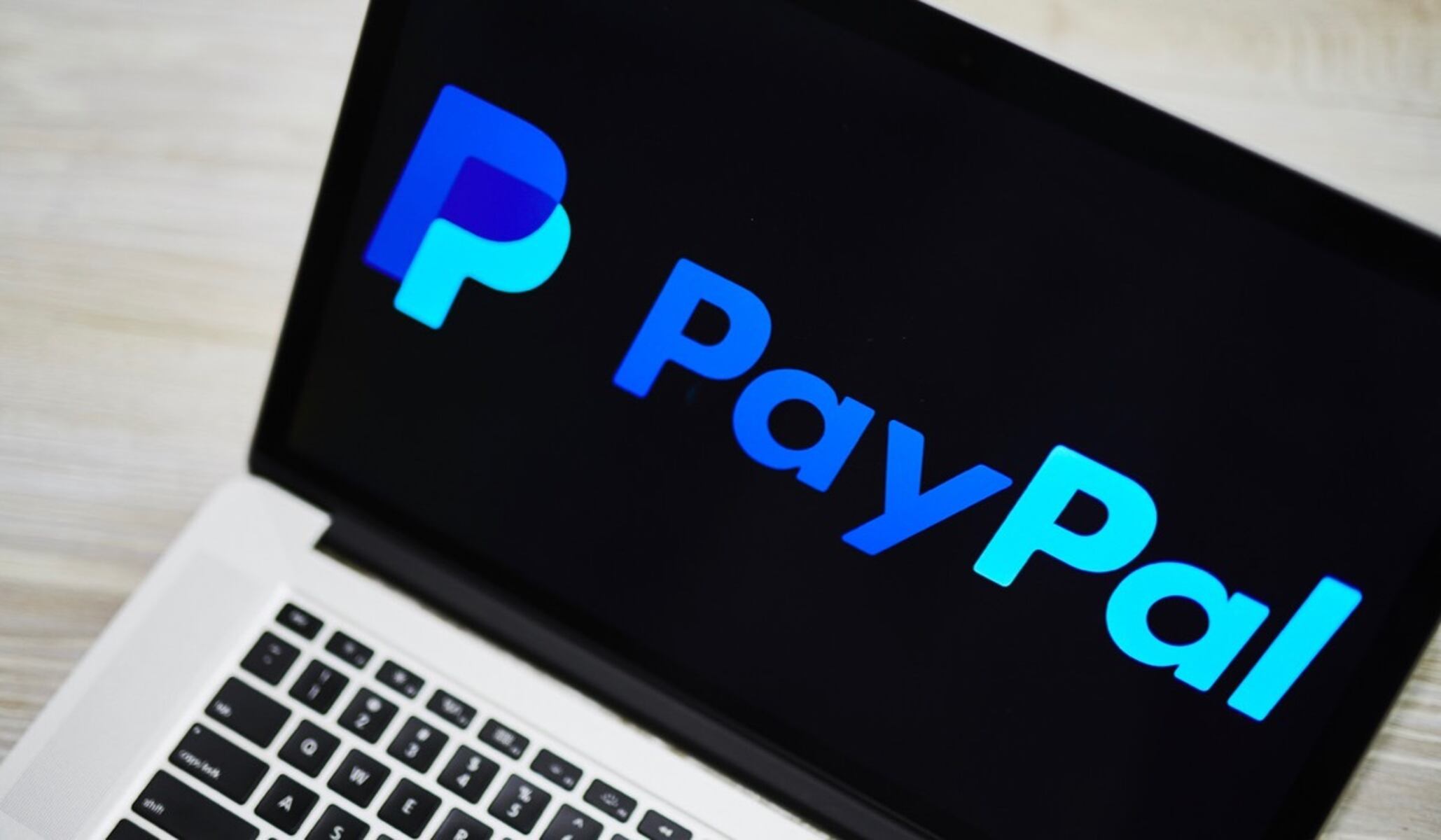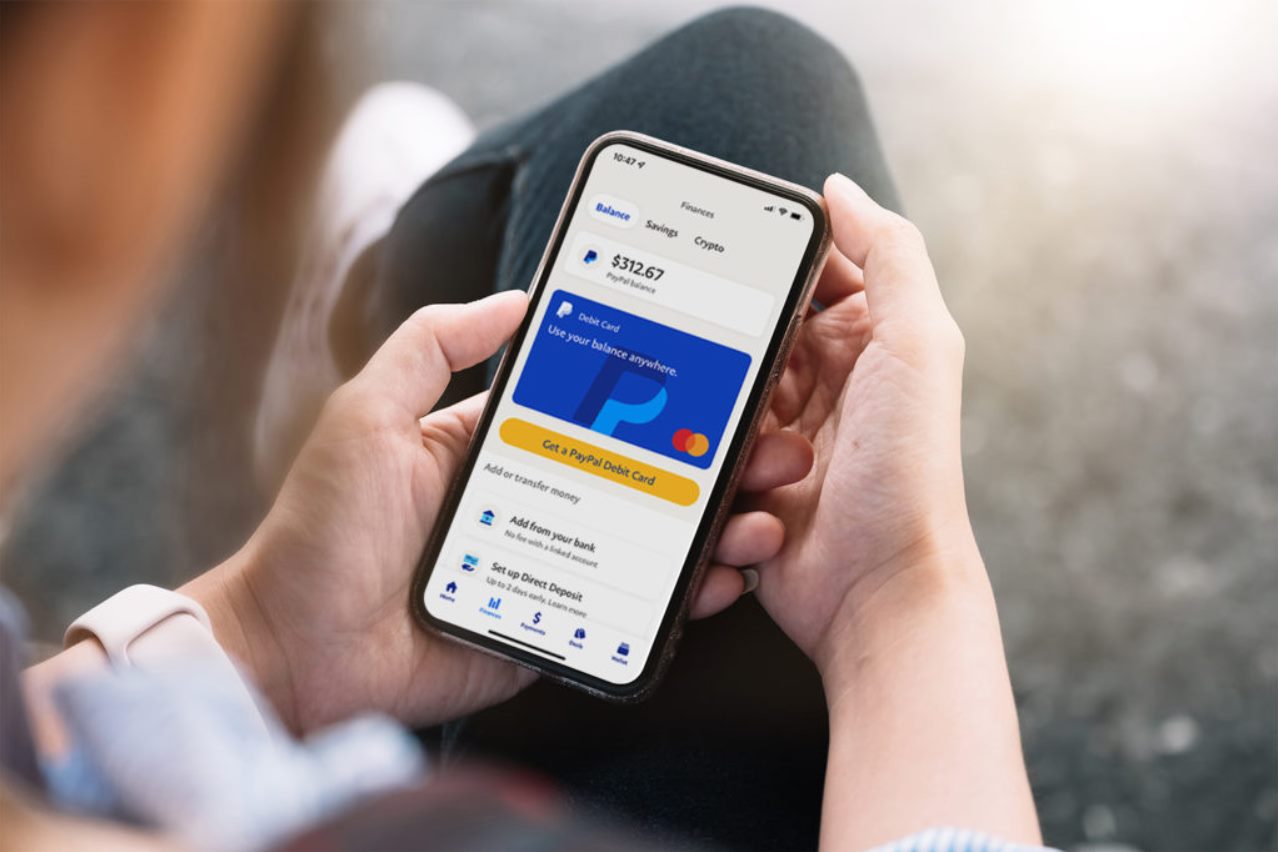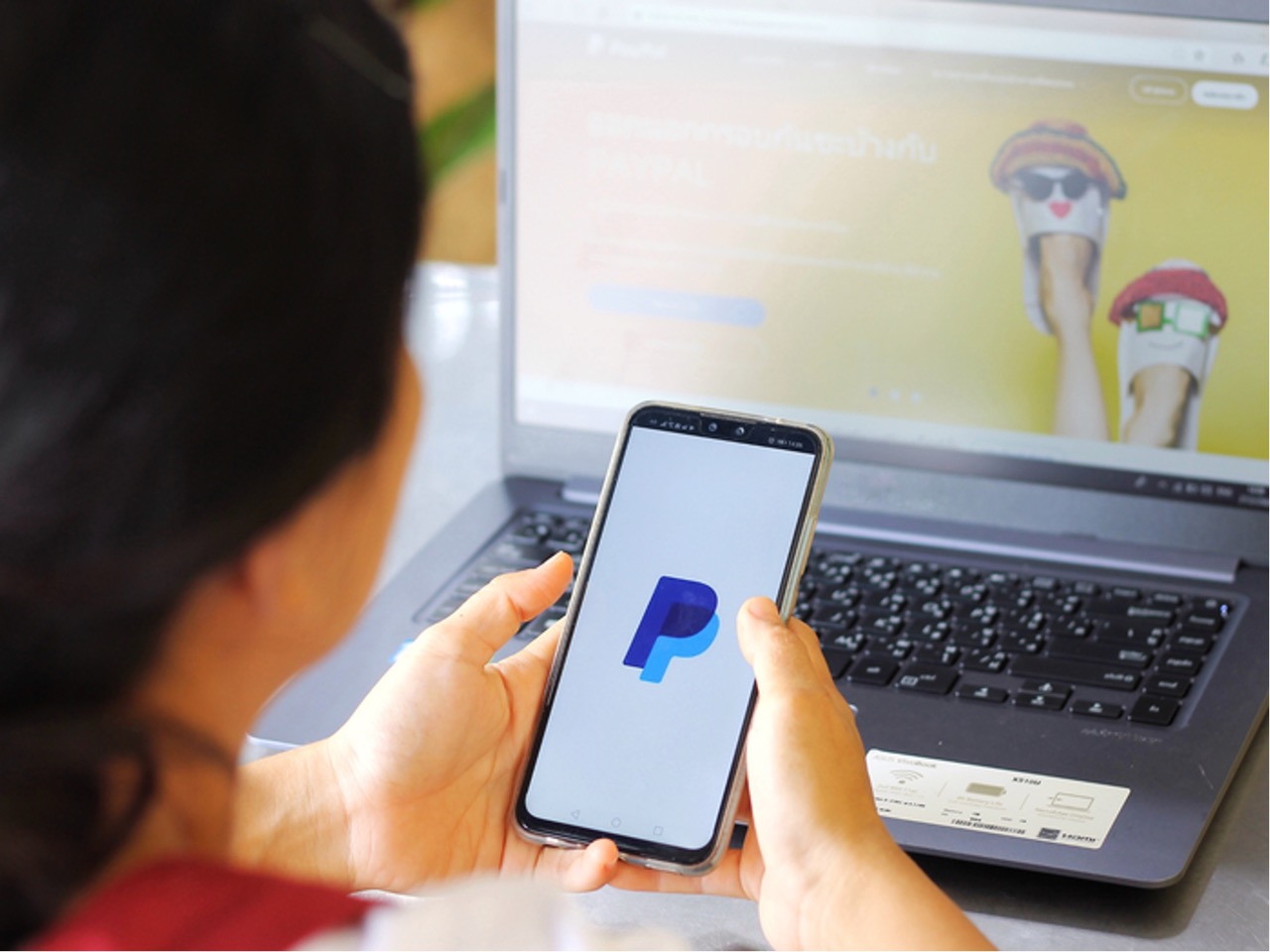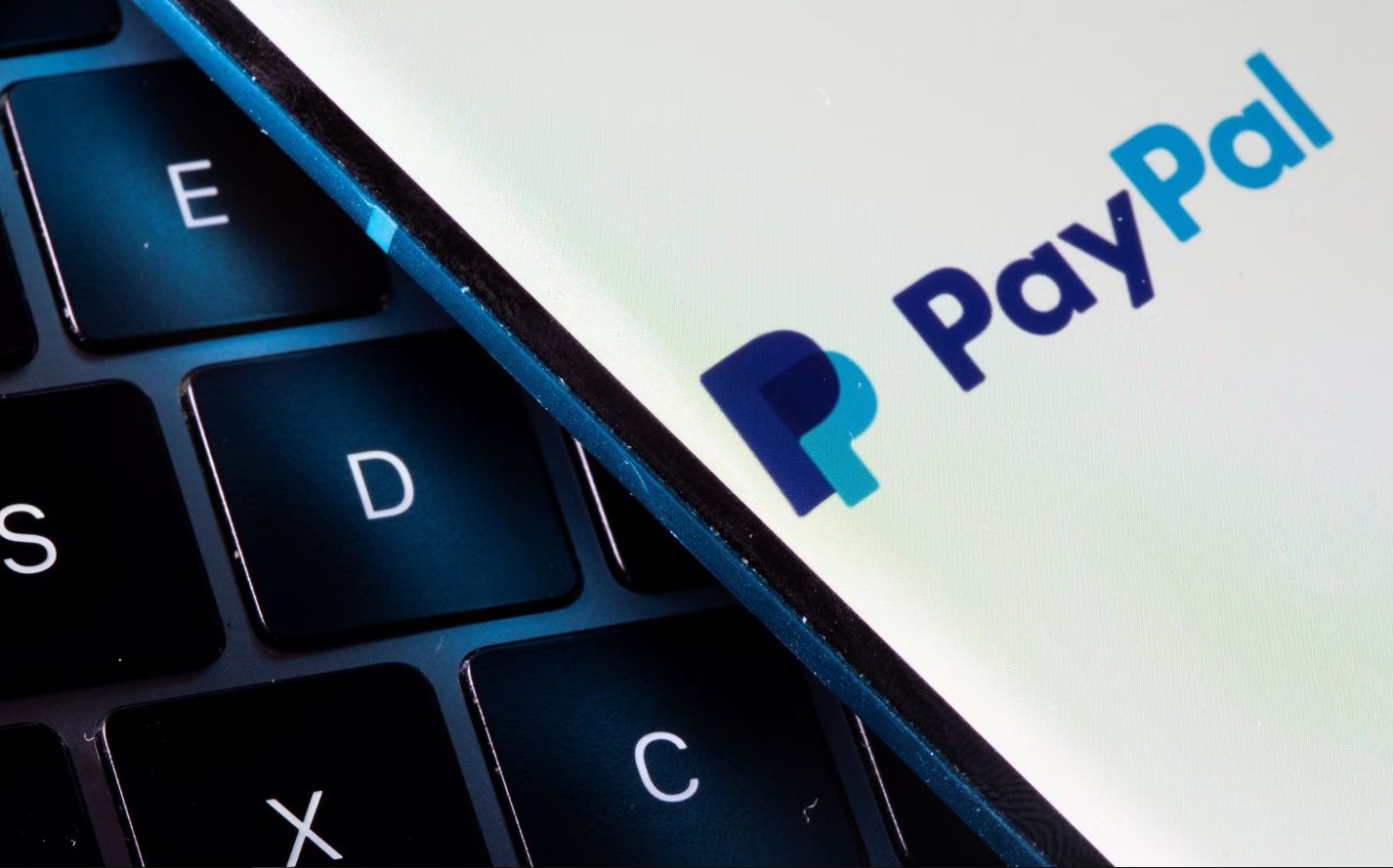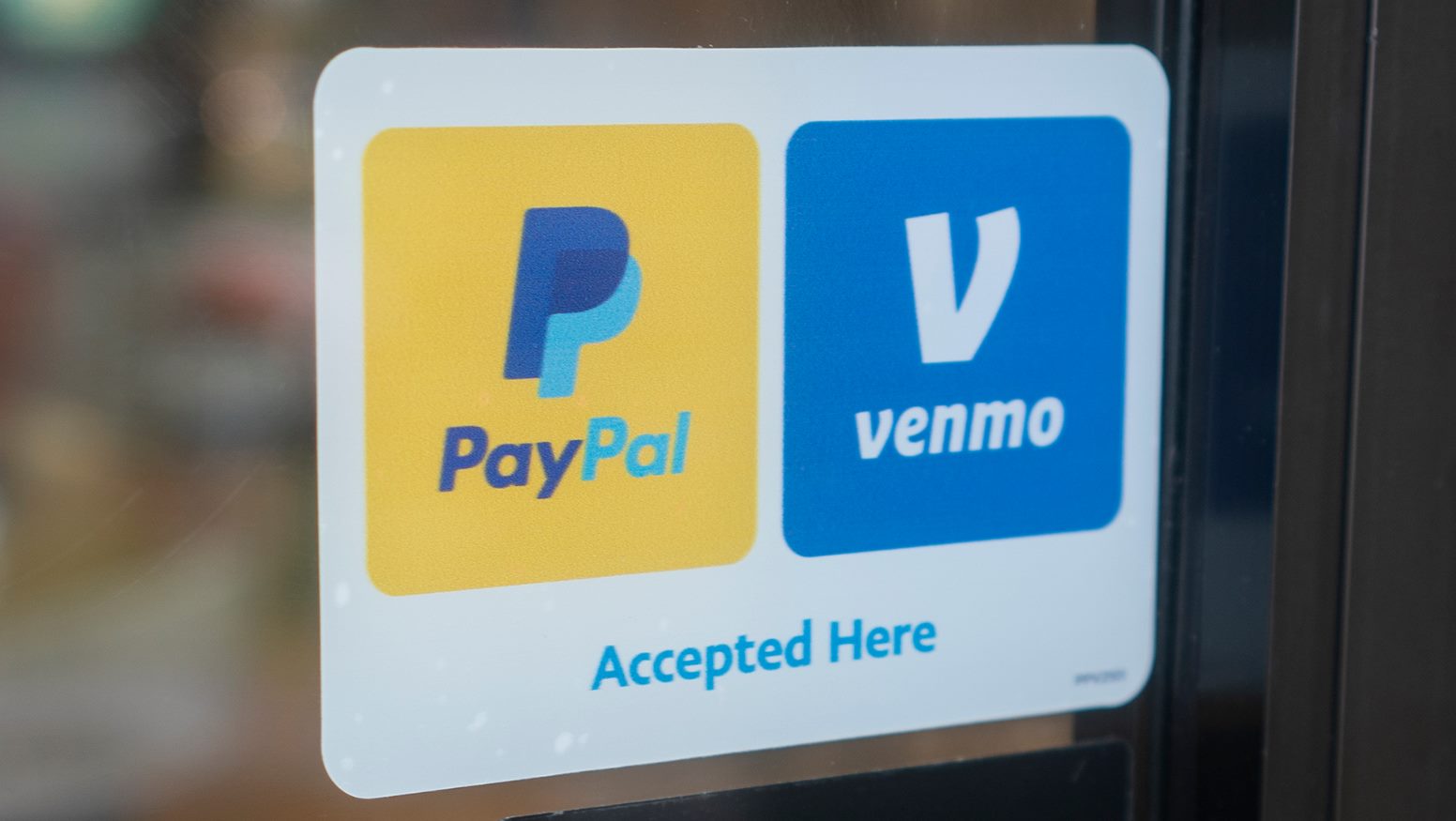Introduction
Welcome to the world of international money transfers with PayPal. Whether you need to send money to friends or family living in another country, pay for goods and services from overseas vendors, or receive funds from international clients, PayPal provides a secure, convenient, and efficient solution.
With its global presence and trusted reputation, PayPal has become a go-to platform for millions of individuals and businesses worldwide. It offers a seamless and accessible way to send and receive money across borders, eliminating the need for cumbersome bank transfers or expensive wire fees.
In this guide, we will walk you through the process of sending money internationally with PayPal, covering everything from setting up your account to understanding exchange rates and fees. We will also provide tips and insights to ensure a smooth and hassle-free experience.
So, whether you’re an expat supporting your family back home, an online business owner making international payments, or a traveler needing to pay for services abroad, PayPal has you covered. Let’s dive in and discover how you can easily and securely send money across the globe with PayPal.
Benefits of using PayPal to send money internationally
When it comes to international money transfers, PayPal offers a multitude of benefits that make it a preferred choice for millions of individuals and businesses. Here are some key advantages of using PayPal to send money internationally:
- Convenience: PayPal provides a user-friendly interface, allowing you to send money with just a few clicks. Whether you’re using a computer or a mobile device, PayPal’s platform is accessible from anywhere, anytime.
- Security: With PayPal, you can send money internationally with peace of mind. The platform uses advanced encryption and fraud prevention tools to protect your financial information. Additionally, PayPal offers Purchase Protection for eligible transactions, safeguarding your funds in case of unauthorized activity.
- Speed: International money transfers with PayPal are typically fast, enabling recipients to access the funds quickly. Depending on the recipient’s country and banking system, the transfer can be completed within minutes or up to a few business days.
- Flexibility: PayPal offers a range of funding options, allowing you to choose how you want to pay for your international transfer. You can link your PayPal account to your bank account, credit card, or use your PayPal balance to fund the transfer.
- Global network: PayPal is widely accepted and recognized around the world. It supports transactions in multiple currencies, making it easy to send money to and receive money from individuals and businesses in various countries.
- Competitive exchange rates: PayPal offers competitive exchange rates for international transfers. While fees may apply, the exchange rates offered by PayPal are generally favorable, ensuring that you get the most value for your money.
- Accessibility: PayPal has a strong presence in many countries, making it convenient to send money to individuals and businesses in popular destinations. Additionally, PayPal’s mobile app allows you to initiate and track international transfers on the go.
With these benefits, it’s no wonder that PayPal has become a trusted and preferred platform for international money transfers. Its ease of use, security features, and global reach make it a reliable choice for individuals and businesses alike.
Setting up your PayPal account
Before you can start sending money internationally with PayPal, you’ll need to create an account. The process is quick and straightforward. Here’s how to set up your PayPal account:
- Go to PayPal’s website: Visit the official PayPal website and click on the “Sign Up” or “Create Account” button.
- Choose your account type: Select whether you want to create a personal account or a business account. If you’re an individual sending money to friends or family, a personal account will suffice. If you’re a business owner or freelancer, a business account is more suitable to receive payments from customers.
- Provide your basic information: Fill in the required details, including your legal name, email address, and a strong password for your PayPal account. Ensure that the email address you provide is active and accessible, as PayPal will use it for communication purposes.
- Verify your email address: Once you’ve submitted your information, PayPal will send a verification email to the address you provided. Click on the link in the email to verify your email address and activate your PayPal account.
- Provide additional information: Depending on the account type you selected, PayPal may require additional information to verify your identity and enable certain features. This may include your address, phone number, and financial details.
- Set up security measures: To enhance the security of your PayPal account, consider enabling two-factor authentication (2FA) and linking a mobile phone number to your account. This adds an extra layer of protection to prevent unauthorized access.
- Agree to the terms and conditions: Read through PayPal’s terms and conditions, privacy policy, and user agreement, and click on the checkbox to indicate that you agree to them. It’s important to understand the rules and guidelines imposed by PayPal to ensure a smooth and compliant experience.
- Complete the account setup: Follow any additional prompts or instructions provided by PayPal to finalize the account setup process. This may include confirming your identity, linking a bank account or credit card, or setting up payment preferences.
Once you have successfully set up your PayPal account, you can start using it to send and receive money internationally. Remember to keep your login credentials and account information secure, and regularly review and update your settings to ensure optimal account management.
Verifying your PayPal account
Verifying your PayPal account is an important step that enhances security and unlocks certain features and transaction limits. By verifying your account, you can maximize the benefits and functionality of your PayPal account for international money transfers. Here’s how you can verify your PayPal account:
- Link and confirm your bank account: One of the most common methods of verifying your PayPal account is by linking and confirming your bank account. To do this, you will need to provide your bank account details, including the account number and routing number. PayPal will make small deposits into your bank account, usually within a few business days. Once you receive those deposits, you can log into your PayPal account and enter the deposit amounts to confirm your bank account.
- Link and confirm your credit card: Another option for verifying your PayPal account is by linking and confirming a credit card. Similar to the bank account verification process, PayPal will make small charges to your credit card, which you can find on your credit card statement. You will need to log into your PayPal account and enter the exact amounts charged to confirm your credit card.
- Provide additional identification: Depending on your country of residence and the regulations in place, PayPal might require additional documents to verify your account. This could include a copy of your identification document, such as a passport or driver’s license, as well as proof of address, such as a utility bill or bank statement. These documents can usually be uploaded directly through the PayPal website or app.
- Stay within transaction limits: Unverified PayPal accounts typically have transaction limits in place. By verifying your account, you can increase these limits, allowing you to send or receive larger amounts of money. This is especially important for businesses or individuals who frequently engage in international transactions or deal with higher volumes of funds.
- Enhanced account security: Verifying your PayPal account adds an extra layer of security. It ensures that you are the authorized account holder and minimizes the risk of unauthorized access or fraudulent transactions.
Verifying your PayPal account is a straightforward process that adds credibility and trustworthiness to your account. By taking this step, you can enjoy the full functionality of your PayPal account for international money transfers and other transactions.
Linking your bank account or credit card to your PayPal account
To fully utilize the features and benefits of your PayPal account for international money transfers, it’s important to link a bank account or credit card. Linking one of these payment methods to your PayPal account allows you to easily fund your transactions and access your funds. Here’s how you can link your bank account or credit card to your PayPal account:
- Log in to your PayPal account: Visit the PayPal website or open the PayPal app and log in using your email address and password.
- Go to your wallet: Once you’re logged in, navigate to the “Wallet” or “Balance” section of your PayPal account. This is where you can manage your linked payment methods.
- Add a bank account: If you want to link a bank account, click on the “Link a Bank Account” or “Add Bank Account” option. Provide the required information, such as your bank account number and the bank’s routing number. You may also be asked to confirm the ownership of the account through the verification process mentioned earlier.
- Add a credit card: If you prefer to link a credit card, click on the “Link a Card” or “Add Card” option. Enter the credit card details, including the card number, expiration date, and CVV code. PayPal may also require you to confirm ownership of the credit card through a verification process.
- Confirm the linking process: After providing the necessary information, PayPal will initiate a verification process to confirm the validity of the bank account or credit card. This may involve small deposits or charges that you will need to verify through your bank or credit card statement.
- Manage your linked payment methods: Once your bank account or credit card is successfully linked and verified, you can easily manage and access them through your PayPal account. You can choose which payment method to use for different types of transactions, and you can also add or remove payment methods as needed.
Linking your bank account or credit card to your PayPal account allows you to seamlessly transfer money internationally. It provides you with flexibility in how you fund your transactions and access your funds, making the process of sending and receiving money across borders even more convenient.
Understanding exchange rates and fees
When sending money internationally with PayPal, it’s important to understand the exchange rates and fees involved to ensure transparency and make informed decisions. Here’s what you need to know:
Exchange rates: PayPal applies an exchange rate to convert your funds from one currency to another. This exchange rate may differ slightly from the mid-market exchange rate and often includes a small markup. It’s advisable to check the exchange rate offered by PayPal before initiating the transaction to have a clear understanding of the conversion rate being applied.
Fee structure: PayPal charges fees for international money transfers, which can vary depending on factors such as the transfer amount, destination country, and payment method used. Fees are typically a percentage of the transaction amount or a flat fee. It’s important to review PayPal’s fee structure to understand the charges applicable to your specific transaction.
Fee transparency: PayPal provides a clear breakdown of the applicable fees and exchange rates before confirming your international money transfer. This transparency allows you to see how much will be deducted from the total amount you send, ensuring that there are no surprises during the transaction process.
Currency conversion options: When sending money internationally with PayPal, you have the option to choose who pays for the currency conversion fees. PayPal offers different choices, such as having the sender cover the fees or allowing the recipient to handle the conversion. Consider your preferences and discuss with the recipient to determine the most suitable option.
Other factors to consider: Different factors can impact the total amount received by the recipient, such as intermediary bank fees, local banking regulations, and potential currency conversion fees imposed by the recipient’s financial institution. It’s essential to communicate with the recipient and ensure they are aware of any potential deductions or fees on their end.
By understanding the exchange rates and fees involved in international money transfers with PayPal, you can make well-informed decisions and accurately assess the costs involved. This knowledge allows you to plan your transfers effectively and ensure that the recipient receives the intended amount.
Initiating an international money transfer with PayPal
Sending money internationally with PayPal is a straightforward process that can be done in just a few simple steps. Here’s a guide on how to initiate an international money transfer with PayPal:
- Log in to your PayPal account: Visit the PayPal website or open the PayPal app and log in using your email address and password. Make sure your account is properly set up and verified.
- Click on “Send & Request”: Look for the “Send & Request” button, usually located on the top navigation menu or on the main page of your PayPal account.
- Select “Send Money”: From the options provided, click on “Send Money” to initiate an international transfer. If you haven’t linked a bank account or credit card yet, you will be prompted to do so at this stage.
- Enter the recipient’s details: Provide the recipient’s email address or mobile number associated with their PayPal account. If the recipient doesn’t have a PayPal account, you can still send money by choosing the option to “Send to friends and family.”
- Choose the payment method and amount: Select the payment method you want to use to fund the international transfer, such as your bank account or credit card linked to your PayPal account. Enter the amount you wish to send in the recipient’s currency.
- Review and confirm: Take a moment to review the transaction details, including the exchange rate and any applicable fees. Ensure that all the information entered is accurate, and proceed to confirm the transfer.
- Complete the transaction: Depending on the payment method you selected, you may be required to provide additional authentication such as a security code sent to your mobile device or an additional password. Follow the prompts to finalize the transaction.
- Notification to the recipient: After completing the transaction, PayPal will send a notification to the recipient informing them that they have received money in their PayPal account or that they need to sign up for a PayPal account to claim the funds.
- Tracking the transaction: You can track the status of your international money transfer in your PayPal account. PayPal provides updates on the transaction, including when the funds have been sent, received, or withdrawn by the recipient.
By following these steps, you can easily and securely initiate an international money transfer with PayPal. Remember to review the details and fees associated with the transaction before confirming to ensure a smooth and transparent process.
Adding recipient details and choosing the payment method
When sending money internationally with PayPal, it’s important to provide accurate recipient details and select the appropriate payment method. This ensures a smooth and successful transfer. Here are the steps to add recipient details and choose the payment method:
- Log in to your PayPal account: Visit the PayPal website or open the PayPal app and log in using your email address and password. Make sure your account is properly set up and verified.
- Click on “Send & Request”: Look for the “Send & Request” button, usually located on the top navigation menu or on the main page of your PayPal account.
- Select “Send Money”: From the options provided, click on “Send Money” to initiate a transfer.
- Enter the recipient’s details: Provide the recipient’s email address or mobile number associated with their PayPal account. If the recipient doesn’t have a PayPal account, select the option to “Send to friends and family” and provide the necessary details such as their name and contact information.
- Choose the payment method: Next, select the payment method you want to use to fund the transfer. PayPal offers various options, including your linked bank account, credit card, or PayPal balance. Choose the method that is most convenient for you.
- Enter the transfer amount and currency: Specify the amount you wish to send and choose the currency in which you want the recipient to receive the funds. PayPal will automatically calculate the exchange rate based on the current rates.
- Review the transaction details: Take a moment to review all the information you have entered, including the recipient’s details, payment method, transfer amount, and currency. Ensure that everything is accurate and correct any mistakes if necessary.
- Confirm the transfer: Once you are satisfied with the details, proceed to confirm the transfer. You may be prompted to provide additional authentication, such as a security code sent to your mobile device or an additional password for added security.
- Notification to the recipient: After completing the transaction, PayPal will send a notification to the recipient informing them that they have received money in their PayPal account or that they need to sign up for a PayPal account to claim the funds.
- Payment method availability: It’s important to note that the availability of payment methods may vary depending on the recipient’s country and the services offered by PayPal in that region. Ensure that the chosen payment method is supported for sending money to the recipient’s location.
By carefully adding recipient details and choosing the appropriate payment method, you can ensure that your international money transfer is directed to the right recipient and funds are correctly processed. Take the time to validate and review the details to avoid any potential errors or complications.
Reviewing and confirming the transfer
Before finalizing an international money transfer with PayPal, it’s essential to review and confirm all the details to ensure accuracy and peace of mind. Taking a moment to validate the transaction can help prevent any potential mistakes or issues. Here’s how you can review and confirm the transfer:
- Log in to your PayPal account: Access your PayPal account by visiting the website or opening the PayPal app and entering your login credentials.
- Access the transaction details: Navigate to the “Payments” or “Activity” section in your PayPal account, where you can find a record of your recent transactions.
- Locate the international money transfer: Look for the specific transaction that corresponds to the international money transfer you wish to review and confirm.
- Review the transaction summary: Take a close look at the transaction summary, which includes details such as the recipient’s information, transfer amount, currency exchange rate, fees, and total amount to be sent.
- Verify recipient details: Ensure that the recipient’s email address, mobile number, or other contact information is correct and corresponds to the intended recipient. Double-checking this information is crucial to avoid any misdirected transfers.
- Confirm the payment method: Verify that the payment method you have chosen is the one you intended to use for the international money transfer. This could be your linked bank account, credit card, or PayPal balance.
- Review the exchange rate and fees: Examine the applied exchange rate to confirm that it aligns with your expectations. Additionally, check the fees associated with the transfer to ensure that they are in line with what you anticipated.
- Check other relevant details: Take note of any applicable transaction reference numbers or special instructions provided by PayPal.
- Confirm the transfer: If all the details are accurate and as expected, proceed to confirm the international money transfer. PayPal may require additional authentication, such as entering a security code sent to your mobile device or providing an additional password, to ensure the security of the transaction.
- Review the confirmation: Once the transfer is confirmed, PayPal will provide an on-screen confirmation and send you an email receipt. It’s important to keep these records for future reference.
By carefully reviewing and confirming the transfer details, you can have peace of mind knowing that everything is accurate and in order. This final step ensures that your international money transfer with PayPal goes smoothly and according to plan.
Tracking the status of your international money transfer
After initiating an international money transfer with PayPal, it’s important to be able to track its progress and stay informed about its status. PayPal provides tools and features that allow you to easily monitor and track your transactions. Here’s how you can track the status of your international money transfer:
- Log in to your PayPal account: Access your PayPal account by visiting the website or opening the PayPal app and entering your login credentials.
- Review your recent activity: Navigate to the “Payments” or “Activity” section of your PayPal account, which displays a list of your recent transactions.
- Find the international money transfer: Locate the specific transaction that corresponds to the international money transfer you want to track.
- Check the transaction details: Review the transaction details, including the recipient’s information, sent amount, currency exchange rate, fees charged, and the date of the transfer.
- Track the status: PayPal provides updates on the progress of your international money transfer. These updates may include notifications for when the transfer is initiated, completed, or if additional information is required. Keep an eye out for these notifications in your PayPal account dashboard or email inbox.
- View the transaction history: For more detailed information, you can click on the specific transaction to view its history. This will show you a timeline of the transaction, including any updates or actions taken.
- Contact customer support if needed: If you have any concerns or queries about the status of your international money transfer, you can reach out to PayPal’s customer support. They can provide assistance and guidance to help resolve any issues or provide additional information about the transfer.
- Keep track of recipient actions: If the recipient needs to take action to receive the funds, such as creating a PayPal account or completing a verification process, make sure to communicate with them to ensure a smooth and timely process.
- Monitor the funds in the recipient’s account: Once the international money transfer is marked as completed and the funds are successfully deposited into the recipient’s PayPal account, you can communicate with the recipient to confirm that they have received the funds.
- Retain transaction records: It is important to keep a record of the transaction details and any related communication or documentation for future reference or potential disputes.
By actively tracking the status of your international money transfer with PayPal, you can stay informed about its progress and ensure a smooth and successful transaction. Regularly check for updates and communicate with the recipient to ensure a seamless transfer experience.
Receiving money internationally with PayPal
As the recipient of an international money transfer, PayPal offers a convenient and secure way to receive funds from around the world. Whether you are a freelancer, an online seller, or an individual receiving money from friends or family abroad, PayPal provides a seamless process for receiving money internationally. Here’s how you can receive money with PayPal:
- Create a PayPal account: If you don’t already have a PayPal account, sign up for one by visiting the PayPal website or downloading the PayPal app. Provide the necessary information and follow the steps to create your account.
- Confirm your email address: Upon creating your PayPal account, PayPal will send a confirmation email to the email address provided during sign-up. Click on the verification link in the email to confirm your email address.
- Provide payment details: To receive money, you need to link a bank account or credit card to your PayPal account. This allows PayPal to deposit the funds directly into your account or card. Follow the instructions on PayPal’s website or app to link and verify your payment details.
- Communicate with the sender: Inform the sender about your PayPal email address so they can send the funds to the correct account. Providing your PayPal email address is crucial as it serves as your unique identifier to receive funds through PayPal.
- Monitor your PayPal account: After the sender initiates the international money transfer, keep an eye on your PayPal account to track the receipt of funds. PayPal provides notifications and updates regarding the incoming funds, which you can access through your PayPal account dashboard or email notifications.
- Withdraw the funds: Once you have received the funds in your PayPal account, you can choose to keep the money in your PayPal balance for future use or withdraw it to your linked bank account. PayPal provides simple and secure withdrawal options, allowing you to access your funds in a timely manner.
- Monitor transaction history: PayPal keeps a record of all your incoming transactions, allowing you to review and track your history of received funds. This feature helps to maintain accurate financial records and provides a reference for future transactions.
- Manage your funds: With your PayPal account, you can easily manage and use your received funds. You can shop online, pay bills, send money to others, or even transfer the funds to your linked bank account for offline use.
- Ensure security: PayPal offers industry-leading security measures to protect your account and funds. Be vigilant in keeping your account credentials secure and regularly review your account activity to detect any unauthorized transactions. Contact PayPal’s customer support immediately if you suspect any fraudulent or suspicious activity.
By using PayPal as the recipient, you can receive money from across the globe in a secure and convenient manner. Ensure that your PayPal account is verified and your payment details are up to date to ensure a seamless experience when receiving money internationally.
Tips for a smooth international money transfer experience
When it comes to international money transfers with PayPal, there are several tips that can help ensure a smooth and hassle-free experience. Here are some valuable tips to consider:
- Double-check recipient details: Before initiating the transfer, verify that you have accurately entered the recipient’s email address or mobile number associated with their PayPal account. A simple error in the recipient’s information can lead to a failed or misdirected transfer.
- Communicate with the recipient: Stay in touch with the recipient throughout the process. Make sure they have a PayPal account or provide instructions on how to set up an account if needed. Clear communication can help avoid any confusion or delays.
- Be aware of time zones and business hours: If you need to communicate with PayPal’s customer support or contact the recipient regarding the transfer, be mindful of time zones and business hours. This ensures that you can reach out to the relevant parties at a convenient time for both parties.
- Understand applicable fees and exchange rates: Familiarize yourself with PayPal’s fee structure and exchange rate policies. Understanding the costs involved and being aware of any potential fees or fluctuations in exchange rates can help you accurately estimate the amount you will send or receive.
- Consider timing and holidays: Take into account any relevant holidays or weekends that may impact the processing time of the transfer. It’s advisable to initiate the transfer well in advance of any time-sensitive deadlines to ensure the funds are received on time.
- Keep records of transactions: Maintain a record of your international money transfers, including transaction details, confirmation emails, and any relevant communication with PayPal or the recipient. These records can serve as proof of the transaction and are useful for reference or dispute resolution if needed.
- Ensure sufficient funds: Before initiating an international money transfer, make sure you have sufficient funds in your linked bank account or PayPal balance to cover the transfer amount and any associated fees. This helps prevent any potential delays or complications during the transfer process.
- Stay informed about PayPal’s policies: Keep up to date with PayPal’s policies and terms of service, as they can change over time. Staying informed allows you to make well-informed decisions and ensures compliance with PayPal’s guidelines.
- Regularly review your account activity: Take a few minutes to review your PayPal account activity on a regular basis. This helps to identify any unauthorized transactions or suspicious activities and allows you to take immediate action if necessary.
- Contact customer support if needed: If you encounter any issues or have questions or concerns about your international money transfer, reach out to PayPal’s customer support. They are available to assist you and provide guidance to ensure a smooth experience.
By following these tips, you can enhance your international money transfer experience with PayPal. Planning ahead, staying informed, and maintaining clear communication with the recipient and PayPal can contribute to a seamless and successful transaction.
Conclusion
Using PayPal for international money transfers offers a convenient, secure, and reliable solution for individuals and businesses alike. With its user-friendly interface, global reach, and robust security features, PayPal has become a trusted platform for sending and receiving money across borders.
In this guide, we have explored the process of sending money internationally with PayPal, from setting up your account to understanding exchange rates and fees. We’ve also covered tips and insights to ensure a smooth transfer experience.
By setting up your PayPal account, verifying it, and linking your bank account or credit card, you can easily send money to recipients worldwide. Understanding exchange rates and fees allows you to make informed decisions and accurately estimate the costs involved. Initiating the transfer, adding recipient details, and choosing the payment method ensures that your funds are directed to the right recipient.
Tracking the status of your international money transfer provides peace of mind and allows you to stay informed about its progress. As a recipient, PayPal makes it easy to receive funds from abroad, withdraw them to your bank account, and manage your finances effortlessly.
To have a smooth international money transfer experience, it’s important to double-check recipient details, communicate effectively, and be aware of fees, exchange rates, and timing considerations. Keeping records, ensuring sufficient funds, and staying informed about PayPal’s policies enhance the overall process.
By following these steps and tips, you can leverage the benefits of PayPal to seamlessly send and receive money internationally, connecting with friends, family, and business partners across the globe.







